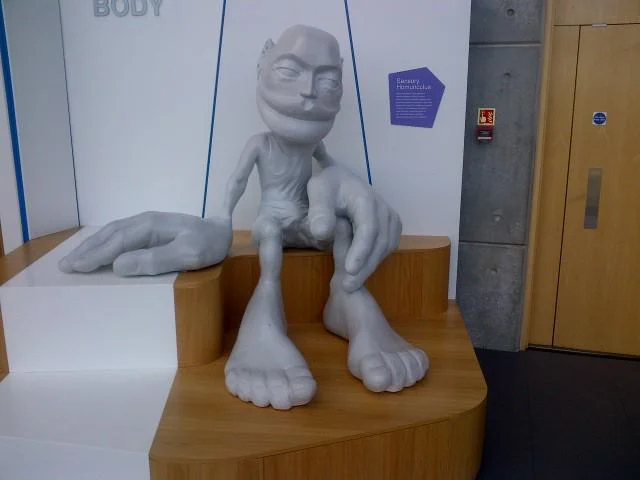Two out of Three ain't Bad...But sometimes it is
/image credit: https://commons.wikimedia.org/wiki/File:Meatloaf_(1).jpg
“What do you mean my plantar fasciitis is due to my hip?”
I recently saw a 60 YO male patient with right-sided plantar fasciitis of approximately 1-1/2 months duration. It began insidiously with pain located at the medial calcaneal facet on the right hand side. He had localized tenderness in this area with some spread distally towards the metatarsal heads. He has ankle dorsiflexion was relatively symmetrical with mild impairment on the right compared to left but only approximately 2 degrees. He had hip extension is 0 degrees on the affected side and 10 degrees on the affected side. Sacroiliac pathomechanics were present as well with the loss of flexion and extension. He had a slight leg length discrepancy, short on the symptomatic side.
So what is going on?
Moving forward in the sagittal plane requires a few things:
Adequate hip extension
Adequate ankle dorsiflexion
Adequate hallux dorsiflexion with an intact Windlass mechanism
He has a diminished step length going from right to left. Because of the lack of hip extension, the motion needs to occur somewhere. His ankle dorsiflexion is almost sufficient but less sufficient on the right (symptomatic) side than it is on the left. He has adequate hallux dorsiflexion but lacks adequate hip extension. Like the song goes, begin "Two of of three ain’t bad". However in this case, it is bad. He has an intact windlass mechanism. In fact, a little too intact. This is causing a tug at the medial calcaneal facet, creating an insertional tendinitis that we know as "plantar fasciitis".
So we did we do?
Manipulated the right sacroiliac joint
Gave him lift she/spread/reach exercises
Gave him shuffle walk exercises
Worked on hip flexor lengthening
Treated the plantar fascial insertion locally with acupuncture and laser therapy
Dr Ivo Waerlop, one of The Gait Guys
#gait, #gaitanalysis,#thegaitguys, #anklerocker#halluxdorsiflexion, #plantarfascitis


















